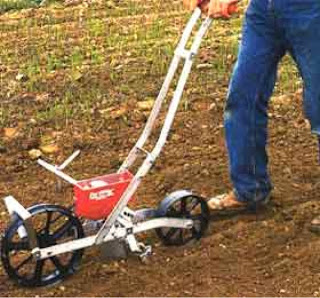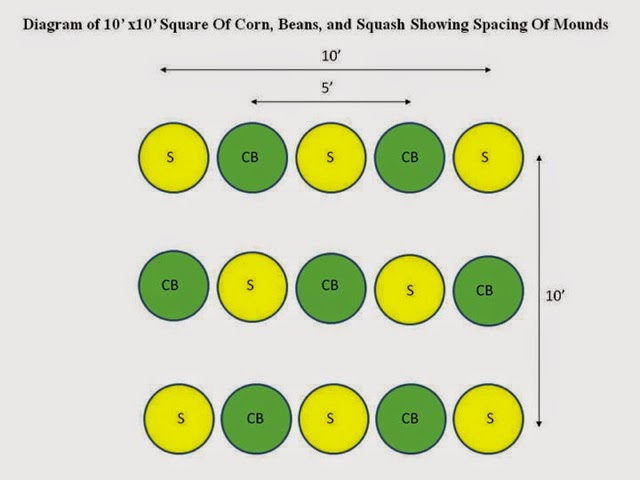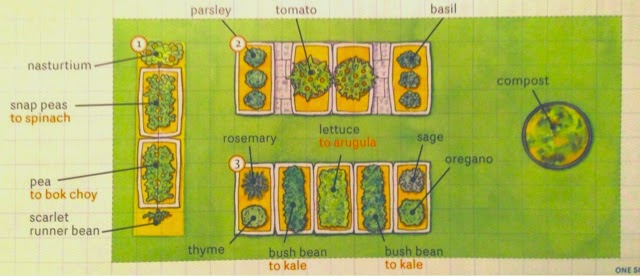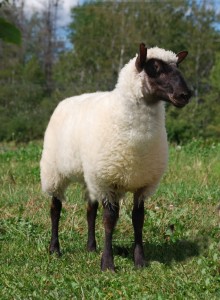I'd never heard this song before until I was looking for a sound track for the background on a short video blurb of my son walking for the first time. Just think it's such as cute and sweet little song though. Have listened to it about 100 times in a row now. I'm hooked on her now (Elizabeth Mitchell)
5/26/2014
Who's My Pretty Baby
I'd never heard this song before until I was looking for a sound track for the background on a short video blurb of my son walking for the first time. Just think it's such as cute and sweet little song though. Have listened to it about 100 times in a row now. I'm hooked on her now (Elizabeth Mitchell)
5/24/2014
What to do with Garlic Scapes
 |
| Garlic scapes on hard neck garlic |
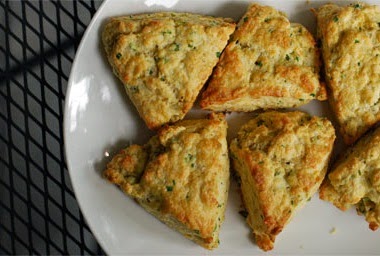 |
| Garlic Scape Cheddar Biscuits |
- Fresh: Store fresh in a flower vase for looks until you're ready to eat (might not want to store them this way for too long though)
- Refrigerate: Store fresh in fridge for about a month.
- Freeze: Food process or just blanche then freeze. Note: I like to make it into an pesto and then freeze it. It's very garlicky but not so much so that you can't enjoy it. Honestly, I still like traditional basil pesto better, but it is still really good, particularly if you're looking for creative uses for it b/c of the quantity you have (see recipe below).
- Pickle: Can them in vinegar brine like you would cucumbers
- Dehydrate: Food process, or finely dice then dehydrate to make a garlic spice. Mortar and pestle or crumble in hands afterwords to get a finer consistency. If you make it very fine, you can make a blend (salt, dried garlic spice, etc..) otherwise it will be more of a chive spice consistency
- Maybe others, who knows'
Garlic Scape Pesto
~1 cup grated Parmesan or Tallegio cheese
~1-2 fresh lime/lemon juice + zest (or about 3 Tbsp)
~1/2 lb. garlic scapes - originally I weighed out a pound's worth but my giant food processor started filling up at what I'd estimate was half of that. And I quickly realized that was PLENTY of pesto. So I mostly just size it by the size it takes to fill up my food processor before processing. Chop it up and it goes down to about the half-way mark. Then add cheese, nuts, peas, and salt. Blend. Then add oil and blend (thus all the approximate marks).
~1/2 cup olive oil (however much it takes to get the consistency right)
~1 cup of toasted pine nuts, almonds, pecans, or walnuts- I prefer pine nuts but they are pricey. Once my pecan trees start making nuts, I'll probably just start using that in most recipes calling for nuts.
~1 cup of steamed English peas - this just dilutes the garlic-ness a bit and also gives it a good consistency. Can't really taste the peas.
~1/4 cup of fresh basil (if you have it, if not, no biggie) - when I made mine, I had garlic scapes but only tiny basil plants, so I went and nipped a few to add in
Salt to taste
Note: If you plant to eat it soon, just put it in a tall jar and top off with olive oil, then put a top on it to prevent oxidation. Or you can freeze it but be sure to get rid of all the air in the ziplock bag. Previously frozen pesto has a milder garlic taste. Can serve over toasted bruschetta or pasta with a side of grilled red bell pepper and/or steamed broccoli
 |
| Garlic Scape Pesto |
Scapes as a Substitute for Garlic
Use them like garlic, as an aromatic in a wide variety of recipes. Scapes lose a lot of their bite when sautéed, more so than garlic cloves, so use at least three or four times as much scape-age as you would clove-age.
Scapes In Stir Fry
Scapes are popular in Asian dishes anyhow. Use in place of scallions or chives. Really you can use them in place of scallions or chives in any recipe, just about.
 |
| Asian Stir Fry with Garlic Scapes |
Grilled Scapes as a Substute for Asparagus
Another great, and very different, way to showcase scapes is to grill them, tossed with a little olive oil, salt, and pepper, over direct heat for about two minutes. Flip them once, halfway through, and finish with an extra sprinkle of flaky salt and maybe a bit of lemon juice and zest. They'll be charred in spots and just soft enough, and their flavor will have sweetened and mellowed dramatically. Grilled scapes are surprisingly reminiscent of asparagus, and surprisingly different from raw scapes.
 |
| Grilled Scapes - Served Like Asparagus |
Roasted Garlic Scapes
Take the scapes and put them in a lightly oiled roasting pan, top with salt (kosher or sea salt works best). Put the loaded and covered pan in a hot (425°F) oven for 30 to 45 minutes or until they are beginning to turn brown. serve as a side or main dish. Tastes like roasted garlic but creamier. This is also good drizzled with a light cheese sauce.
Sauted Scapes
Just tonight I boiled then sauted fresh beets in balsamic then tossed in some diced scallions at the last second. I usually just leave it with beets and balsamic but the scapes were a great mild garlic addition.
Scape Quiche
Or could just as easily just include them in an omlet
 |
| Garlic Scape Quiche |
Garlic Scape Mashed Potatoes
Only add a little, then taste. This stuff's weird how you sometimes need a lot to equal a garlic clove and other times not. So best to add too little than too much.
In Flower Arrangement
Weird but cool, plus they're pretty to look at up until you EAT them.
 |
| Garlic Scape Flower Arrangement |
 |
| Garlic Flowers |
Garlic Scape Vinegar
1 cup of white or rice vinegar with 1-2 fresh bruised green scapes. Let infuse 10 days for max flavor. Can replace scapes to keep pretty green color going. This could just as easily end being pickled scapes as well. Just cram more scapes in. Then you're primary eating the scapes vs the flavored vinegar.
 |
| Garlic Scape Flavored Vinegar |
5/10/2014
Tractors and Implements 101
We've owned 10 acres of land for the last 3 years and have managed to squeek by without owning a tractor outright through a combination of tractor rentals and a very kind neighbor (he surprises us with a tilling or a bush hog from time to time). On 1-2 acres we're growing fruit bushes and fruit trees, 1 acre's growing a vegetable plot, 3 - 4 acres is wooded, and the other ~4.5 acres is grassland. But tractor rentals are expensive ($400 per round trip) and it's time to REALLY get serious about how we're going to manage these 10 acres. Being just a small amount of land, cost is a major consideration. We're total newbs regarding tractors, so it was time to do a little research. The major considerations are 2-wheel tractor, used 4-wheel, or new 4-wheel, although lately been reading ATV 4-wheeler use for land management. Sounds intriguing (could it work for the short term?). We have a strong preference for diesel.
Used for raking hay into piles. Usually followed up by a hay baler, but if you just wanted to gather hay for making mulch/compost, you could skip hay balers which are VERY expensive.
TRACTOR CHOICES
2-Wheel Walking Tractor
Pros: Cheaper than a 4 wheel (Grillo G85d 8 hp diesel is $3500). Small size is a plus since we don't have a trailer for transportation, nor proper storage for a full size tractor. Could store this one in parents shed for interim. Supposedly these things never break, b/c they have no gears or belts, but if they do, the warranty is pretty awesome. Manufacturer & Elliot Coleman recommend this tractor for a land our size. There are tons of implements for this thing, possibly more than for the 4-wheel tractor. New implements are cheaper than new ones for a 4-wheel. Supposedly easier to work on than a 4-wheel tractor. More maneuverable around corners. Can turn 180 degrees. Much better at cultivating between rows (much less wasted space) and between fruit trees & bushes. Light weight won't cause any soil compaction. Cons: You have to walk the tractor (unless you buy a sulky). Top speed is a fair bit slower. These are only really a con when trying to use it for mowing, but I figure we can diminish this con some by planting more trees along the edges of the property that don't interfere with the path of the sun and reduce the "grassland" area some. Other con is there aren't many folks selling or repairing these guys. And there aren't really any used implements for sale in the area. Fortunately they do have a dealership in Auburn though. Not close, but not an eternity away either. If a mulch layer for growing strawberries is big on your list, these aren't nearly as effective as the implements available for a 4-wheel tractor, but might be in the future. |
| Grillo G85D 8hp |
4-Wheel Tractor - Used
Pros: You can get a used 4-wheel tractor for about the same price as a new 2-wheel, but it has to be pretty old to match the price. Found a diesel international 18 HP with 1700 hours with a mower for $2400 just today. 1700 is a lot of hours though. And it's 2 wheel drive with turf tires, so pretty sure that thing'll get stuck on our mucky parts (since the 4-wheel drive normal tire john deer we rented did a lot). Used implements are cheaper than new ones and there are plenty of used implements to be found. They're still more expensive than new 2-wheel tractor implements in most cases (i think, I need to do more research here). Plenty of folks that can work on these, most likely. Fast mowing. Cons: Possibly a maintenance nightmare. It's a crap shoot. Can cause soil compaction over time due to weight. Where will we store it? How will we transport it? We don't have a barn yet. Barns are expensive too. Depending on the type of used tractor you buy, it might be hard to find parts for (ex/ Iseki). |
| Used Iseki Diesel Tractor From Craigslist with 500 hours for $2300 |
4-Wheel Tractor - New
Pros: New so won't break. If it does, it's under warranty. If it breaks after warranty, you'll still be able to find parts for it for a long while. Plenty of mechanics familiar with the new tractors. Cons: A compact Kubota starts at about $12k plus we'll need a barn to store it in. Crazy expensive. Plus i'd prefer a front loader (which adds about 2-4k) and all wheel drive (which adds more, how much?).
On to implements for the tractor cause cost of tractor isn't the end of it. Tractor's useless without implements.
Subsoiler
For deep tillage. Breaks up hard pan & compacted layers without mixing top and subsoil. Aerates the soil improving drainage and increasing root depth. Good at preparing soil for fruit tree planting. Depth it digs can depend on strength of the tractor. Usually compact tractors can only handle a single tine subsoiler. These tend to be fuel hogs and require a lot of horsepower to get really deep, particularly with more than 1 tine.Chisel Plow
For deep tillage, although not as deep as the subsoiler. Made in 1930's as a soil conserving alternative for the moldboard plow. AKA soil ripper.| Soil Ripper |
Moldboard Plow
For deep tillage. Old school way of plowing the ground. Very cheap implement. Turns over the soil and can handle even large rocks (too rocky for the chisel plow). Tends to mix subsoil with topsoil so better to use chisel plow over moldboard plow, if soil's not too rocky.Cultivator
For pulling weeds up after soil's already been initially worked and planted, and for working in veggie residue (ex/ overwintered green manures). Tills the top 2" or so.Disc Harrow
Used to smooth the surface for planting. Certain arrangements of disc can be used to make rows (called disc hillers). Sometimes the disc hiller is combined with a chain to smooth the top of the hill/row to prepare a fine smooth seed bed. |
| Disc Hillers |
 |
| Disc Harrow |
Chain Harrow
Used to smooth the surface after disc harrowing. Also can be used to break up manure. Pulls out the trash and debris (bad if you want the plant debris incorporated into the dirt). Can turn it over (tines pointing up) if you want to make an ultra smooth seed bed. Tines down scratch/rake the surface. |
| Chain Harrow pulled behind a 4-wheeler |
Spike Harrow
Very similar to the chain harrow and basically used for the same thing except more rigid. Less aggressive than the cultivator or chisel plow. |
| Spike Harrow |
Potato Plow
Name pretty much says it all but it's used to dig up potatoes, garlic,
onions, sweet potatoes, turnips, and other root type veggies.
 |
| Potato Plow |
Rotary Tiller
For shallow tillage on a compact tractor or 2-wheel tractor (can go deeper on large tractors). Combines the work of the plow, disc, and harrow. Helps prevent "overworking" the soil (although still possible). Easier to use, skill-wise, than the other three items.Mower - Flail
Used for cutting rough / tall grass and brush. Doesn't sling like bush hogs. Often used by tractors that cut grass along the side of highways.
 |
| Flail Mower |
Mower - Sickle Bar
Used to cut grass and not shred it up like with a bush hog. Just cuts at the base. Good for cutting into ditches or up steep hills while tractor remains level. They use very little power and don't get plugged on very tall material like bush hogs. Susceptible to damage if they encounter an object they can't cut. Tend to be safer than bush hogs (less slinging).
 |
| Sicklebar Mower |
Mower - Rotary Cutter
Aka bush hog although bush hog is a brand name but has become a common word encompassing all brands of rotary cutter mowers. Single rotating blade used for cutting down brush and super tall grass.
| Bush Hog -- Rotary Cutter |
Finishing Mower
For mowing grass after it's been bush hogged, if you want a lawn like
appearance. Doubt we'll ever get this one though (not soon anyhow).
 |
| Finishing Mower |
Wheel Rake
Used for raking hay into piles. Usually followed up by a hay baler, but if you just wanted to gather hay for making mulch/compost, you could skip hay balers which are VERY expensive.

Wheel Rake

Pine Straw Rake
Might be handy if you have a lot of pine. Little extra income selling pine straw.
Chipper / Shredder
Attaches to the Tractor PTO for power. Some can chip up to 6" diameter wood as well as leaves. Awfully handy for property requiring a lot of cleanup or with wooded areas. Makes great compost / mulch. Ranges from $1000 - $3000.Auger
Used for post hole digging for fences (or a well?) or pre-drilling holes for fruit tree. Sometimes holes end up too compacted for proper root expansion. |
| Auger For Post Hole Digging |
4/24/2014
Inspirational Music
For me, this one is not at all to do with card games but rather life
This one's more to do with the song and less about the video
I'll admit, I'm torn. I LOVE Tommy Emmanual but I also REALLY like the original and simpler version of this song by Mason Williams.
4/14/2014
4/13/2014
Bean Planting + April Farm Activity
The strawberries and garlic (and weeds) are growing with a vengeance.
Our kind neighbor, with a tractor, tilled up about an acre for us without us even asking. So we had to kick butt and get something planted. Having not planned what best to grow, since we're basically farming from afar, we decided to do soil enriching beans and peas. We got varieties suitable for picking dry and growing in bush form since that's likely what will happen and we're not putting in trellis'. Hopefully we'll get at least a couple of fresh batches.
We planted the following from Massey Mercantile:
Next year we're DEFINATELY getting an earthway seeder.
We planted the following from Massey Mercantile:
- Pink-Eye Purple-Hull Cow Peas: 49 days. Heavy yields. Good disease resistance.
- Zipper Cream Cow Peas: 75 days. Good yields of light colored peas. String acts like a zipper to make for easy shelling. AKA southern peas.
- Ford Hook Bush Limas: 70 days. AAS Winner. Finest + largest butter / lima bean. Best yielder.
- Speckled Red Bush Limas: 76 days. Pretty seed. Grows well in hot weather. Very productive.
- Contender Green Bush Beans: 55 days. Extremely early + prolific. Long round oval pods. Resistant to mosaic + powdery mildew.
- Roma II Green Bush Beans: 58 days. Broad flat pods. Very tasty fresh. Disease resistant.
Native American Legend of the Three Sisters
I'm planting this garden and writing this post for my two sweet sisters for National Sibling Appreciation day. The Native American legend of the Three Sisters vary between tribes, but this particular story is from Lois Thomas of Cornwall Island found in "Indian Legends of Eastern Canada".
 |
| Three Sisters Garden - Corn, Beans, Squash |
The Three Sisters Legend
The Iroquois Legend of the Three Sisters
Erney, Diana. 1996. Long live the Three Sisters. Organic Gardening. November. p. 37-40.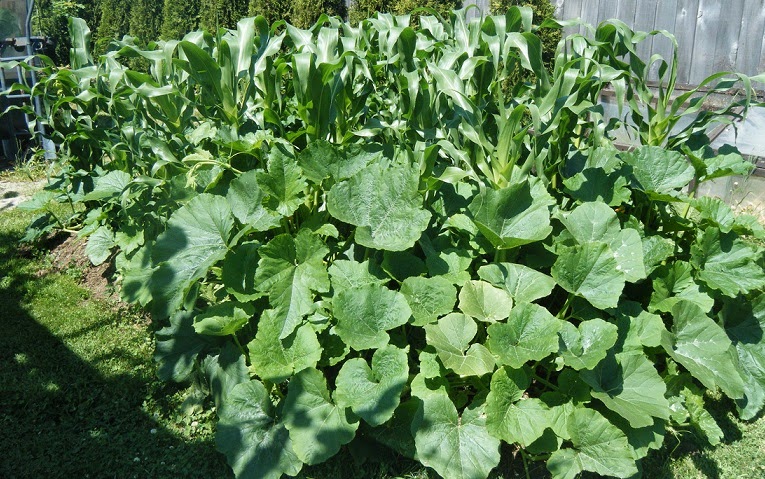 |
| Three Sisters Garden |
The Three Sisters Garden is a technique where corn, pole beans, and vining squash are all three grown together on a mound. The three benefit each other where the corn provides a pole for the bean to climb. The bean provides nitrogen for the other plants, and the squash shades the ground later in the season preventing other weed growth and the mound from getting too hot.
Source:
http://www.birdclan.org/threesisters.htm
3/25/2014
Easy care bag garden
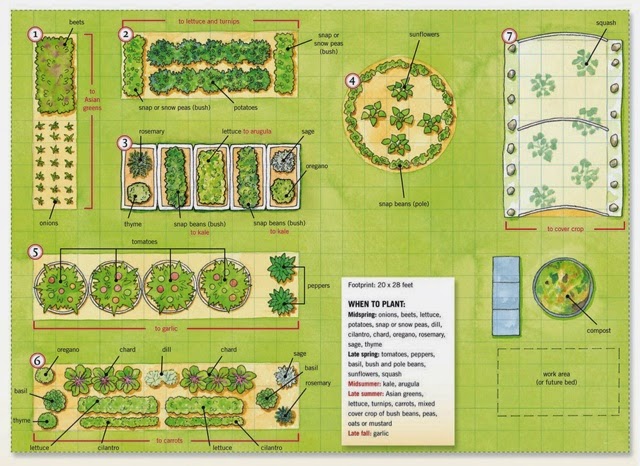
These simple bag garden plans are from the book Starter Vegetable Gardens. It's a 3 year plan. This idea is pretty genius, I think, as it's minimal effort, really cheap, and creates 3 foot wide rows which I think are ideal.
What I like is that you buy a cheap $2 bag of top soil and grow some shallow rooted veggies for one year and end up with the weeds all smothered beneath without even digging. Stack several side by side and you end up withr a 3 foot wide garden row. Then cover the edges with hay to hide the bags.
Year 2 bag garden plan:
Year 3 bag garden plan:
Pretty bag garden example (although it doesn't use the top soil bag):
With top soil bag:
3/09/2014
DIY Soil Block Maker
In his book, Four Seasons Harvest, Elliot Coleman suggests making soil blocks for starting seeds rather than using containers. Growing them this way ensures the roots don't circle the container. They reach the end of the block and stop. This makes it easier to transplants vegetables normally more sensitive to transplant (squash, pumpkins, etc..). Sounded like a plan to me: less transplant shock, less trash, less costs, less trips to the store... Johnny Seeds sells these soil block makers. Nice as they look, I just couldn't get past the price tag, so here's what I made. Took an Apple Shuffle box, butchered it a bit, added some nuts and bolts, and poof, soil block maker. Left the screw protruding a bit to make the seed hole on top of the soil block. You could easily add another nut or screw the screw in more to make the hole bigger.
Elliot Coleman's Recipe:
| DIY Soil Block Maker - From Apple Shuffle Box |
 |
| Johnny Seeds Soil Block Maker |
 |
| Soil Blocks |
- 2 Tbsp Green Sand
- 2 Tbsp Phosphate Rock
- 2 Tbsp Dried Blood
- 3 Qt Peat
- 1 Qt Perlite
- 3 Qt Compost
- 1 Part Compost
- 1 Part Dollar Tree Peat Moss / Vermiculite mix
- A little bit of organic fertilizer
2/13/2014
2/09/2014
Raising Multi-Purpose Sheep
Sheep can be raised for multiple purposes: meat, milk, wool, hides, and grazing service. Below are a few example varieties well suited for multi-purpose sheep farming.
|
Clun Forest Clun Forest Sheep
For looks, this one's my favorite. Sheep grown for wool, traditionally fetch a higher price if the skin and whool are the same color though (despite how pretty this sheep is). This medium-sized 1000 year old breed comes from England but didn’t make it to American until the
70’s. Rams grow to 175-200 lbs and ewes to 130-160 lbs. Clun Forest sheep are adaptable and hardy, yield plenty of
milk, sweet meat, and a creamy white fleece. Twins are typical. They thrive on just grass,
are disease- and parasite-resistant, and easy to keep.
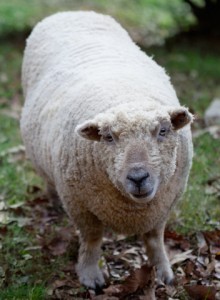 |
| Merinos |
Multi-purpose Merinos sheep are from Australia. They produce lean meat, high-quality wool and are
wrinkle-free, making them easy to sheer and to keep clean and bug-free. Since the skin is wrinkle-free, the hides are fine and easy to work with. It’s been compared to
the quality of Moroccan goat skin so the hides would be great for
clothing or for trading.
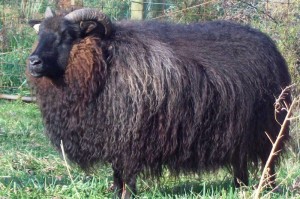 |
| Icelandic |
Icelandic Sheep are centuries old and have remained unchanged for most of that time. They
were imported to Canada 1985, then to the USA in the 1990’s. Their double-layered coat that consists of an inner layer of soft, fine wool and an outer layer that's water-resistant, longer and courser,
growing as long as 15". The fleece is gray, black, brown or patterned. The skin is thick enough to use for rugs but fine enough for clothing. The meat is lean and sweet. The milk is gaining popularity for both drinking and cheese-making purposes. They’re short and stocky, with the rams weighing 180-220 lbs and ewes 130-160 lbs. The ewes are easy breeders, good mothers that typically produce hardy twins and sometimes triplets. They're also feed-efficient and generally easy to care for.
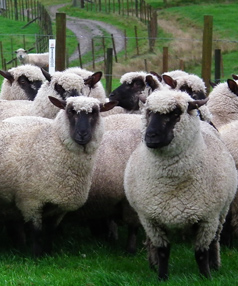 |
| Shropshire |
Developed in England in the early 1800’s. Popular for their gentility, wool and hardiness. They can withstand wind, cold, sleet, and snow. The Shropshire sheep came to America in
the late 1800’s. Adult rams weigh 226-250 lbs and ewes 150-180 lbs. The wool is thick and luxurious. The meat is tasty. Ewes birth easily and typically live long lives. Called the "Ideal Farm Sheep," Shropshires were boasted to have "wool from the tip of the nose to the tip of the toes."
 |
| Racka |
The Racka is a unique breed with both ewes and rams possessing long spiral shaped horns. The breed is of the Zackel type and originated in Hungary. The breed is used for milk, wool and meat production. Mature males may have horns as long as two feet or more. The minimum standard length is given as 50 cm (20 inches) for rams and 30 cm (12-15 inches) for ewes.
The cork-screw horns protrude almost straight upward from the top of the head. The Racka has been described as a hardy animal and is often used in crossbreeding due to its ability to pass this survivability to its offspring. The breeds unique appearance and quiet disposition would make it a desirable animal for hobby situations.
 |
| Rambouillet |
The Rambouillet is the "backbone" of the American Sheep Industry, forming the foundation of most western range flocks and raised throughout the United States. The Rambouillet descends entirely from the Spanish Merino. In fact, it is the French version of the Merino developed when Louis XVI imported 386 Spanish Merinos in 1786 for his estate at Rambouillet.
Though named for the town in France, the breed owes much of its development to Germany and the United States. The Rambouillet is a dual purpose sheep, producing a desirable carcass and good fine wool. Rambouillets are large sized, rugged and long-lived with a strong flocking instinct. Rambouillet ewes possess many desirable traits which have resulted in their inclusion in crossbreeding programs to improve lamb production.
Source:
http://www.sheep101.info/
http://www.survivopedia.com/survivors-guide-raising-multi-purpose-sheep/
Subscribe to:
Posts (Atom)






